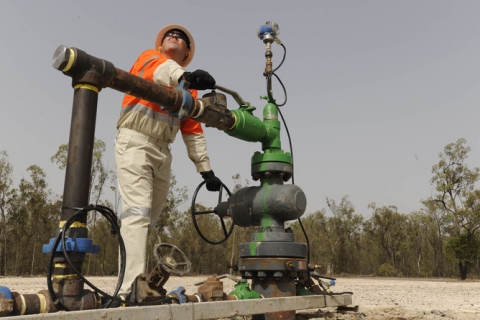This report has presented the bioregional assessment methodology . The methodology is the basis on which bioregional assessments are to be conducted for the Independent Expert Scientific Committee on Coal Seam Gas and Large Coal Mining Development. A Bioregional Assessment is the key delivery mechanism through which the best available science and independent expert knowledge are provided to the IESC on impacts of coal seam gas and coal mining development on water-dependent assets. The IESC formulates advice for the Federal Minister for Sustainability, Environment, Water, Population and Communities on the basis of information contained within the bioregional assessment and other sources, as required. This methodology report has provided detailed guidance to researchers undertaking bioregional assessments on their purpose and background, the specification of bioregions and subregions, the identification and role of water dependent assets, receptors and response variables, and the components that comprise an assessment. The components are:
- Contextual information: Information providing context and background against which qualitative and quantitative assessments of impact and risk of CSG and coal mining development are generated
- Model-data analysis: Output and synthesises from data and models used to develop a quantitative description of the hydrologic relationship between coal seam dewatering and impacts on anthropogenic or ecological receptors
- Impact analysis: The reporting on the direct, indirect and cumulative impacts and of impacts of CSG and coal mining development on receptors within assets and their associated uncertainties
- Risk analysis: A scientific assessment of the likelihood of impacts on receptors contained within assets based on the propagation of uncertainties from models and data
- Outcome summary: A summary of outcomes used by the IESC to support scientific advice on impacts and risk of CSG and coal mining development on water resources.
Uncertainty analyses are critical to the characterisation and definition of the levels of confidence associated with estimated impacts and risks to water dependent assets. The methodology requires all workflows, information sources, models, data and outputs to be publically available and fully transparent. The outputs from a Bioregional Assessment consists of:
1. Scientific advice on the likelihood of direct, indirect and cumulative impacts on anthropogenic and ecological receptors contained within assets
2. Conceptual models of causal pathway connecting depressurisation and dewatering of coal seams at depth to impacts on receptors either at depth or located at or near the surface
3. Quantitative, semi-quantitative and qualitative output from models of ecological, surface water hydrology, groundwater, hydrogeology and coal resources development processes
4. The extent, nature and consequences of impacts
5. Measures of confidence on estimated impacts including likelihoods of risks to receptors and assets
6. Options for monitoring programs and review frequency of future BAs, risk assessments or other studies.
The resulting Bioregional Assessment for any given bioregion is a defensible baseline statement on the best and most current state of scientific knowledge regarding the impacts of CSG and coal mining development on water resources. BAs are an important tool in improving regional-scale management and regulation of CSG and coal mining developments. They provide crucial knowledge and information for the IESC in developing its advice on cumulative impacts, water balances and risk assessments associated with project proposals. Application of this methodology will provide significant improvements in the scientific understanding and availability of information to help protect water resources, assets and values.

